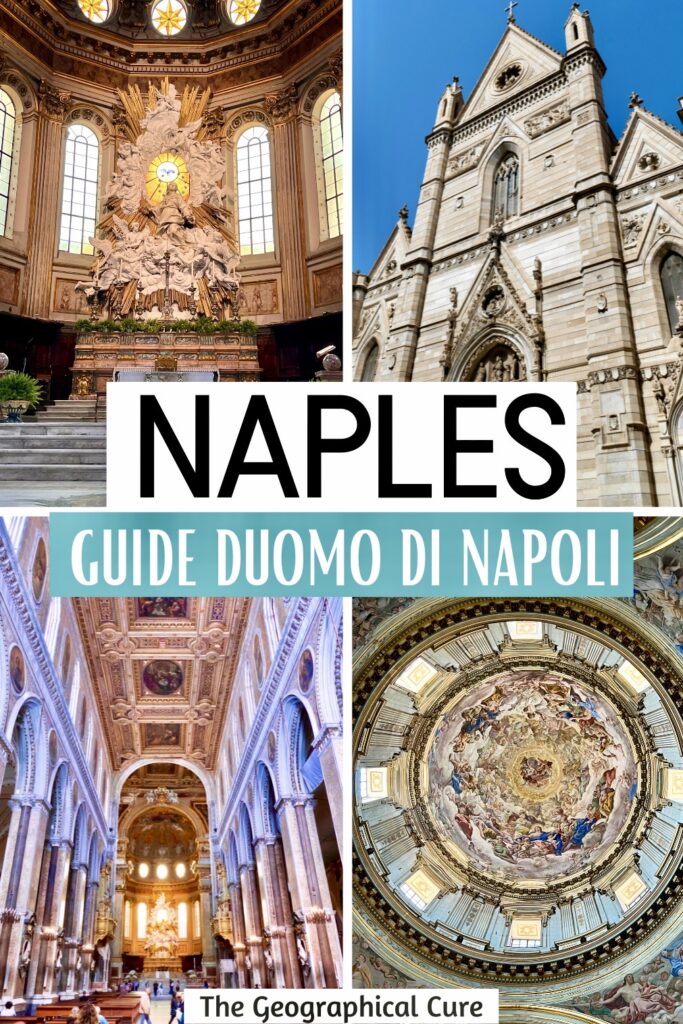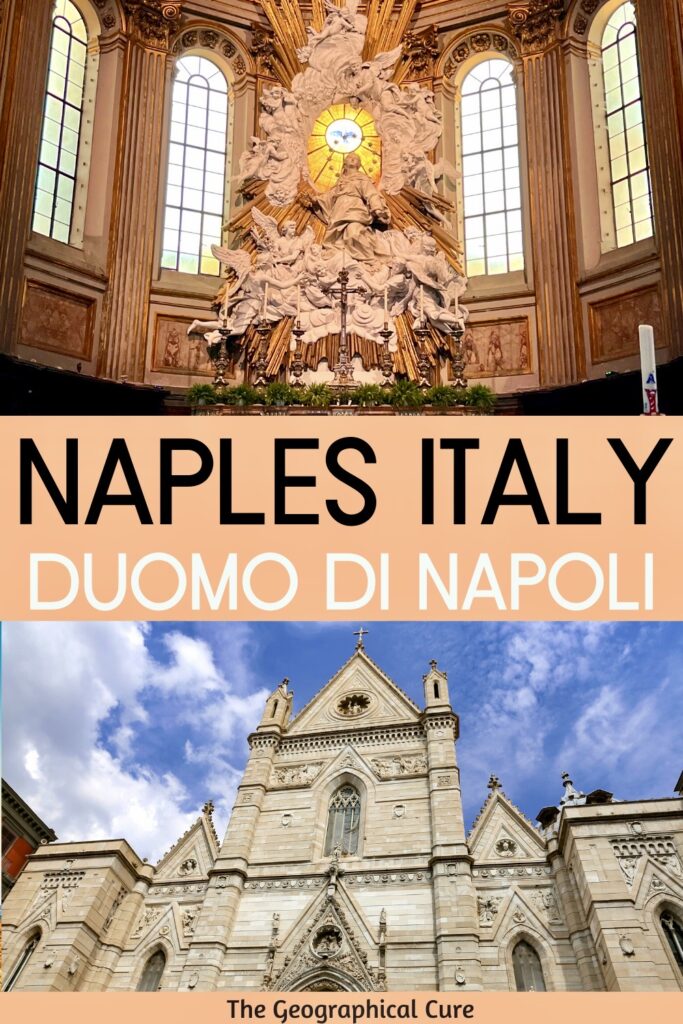Here’s my guide to visiting the Duomo di Napoli in Naples Italy. It’s also variously known as Naples Cathedral, the Cathedral of Santa Maria Assunta, and the Cathedral of San Gennaro.
Despite its rather ungainly Neo-Gothic facade, the cathedral reflects the city’s many-layered history.
Inside lies a fine medieval building that’s now a temple to Baroque excess. Its main attractions are the Chapel of San Gennaro, the Crypt of San Gennaro, and the Treasury Museum.
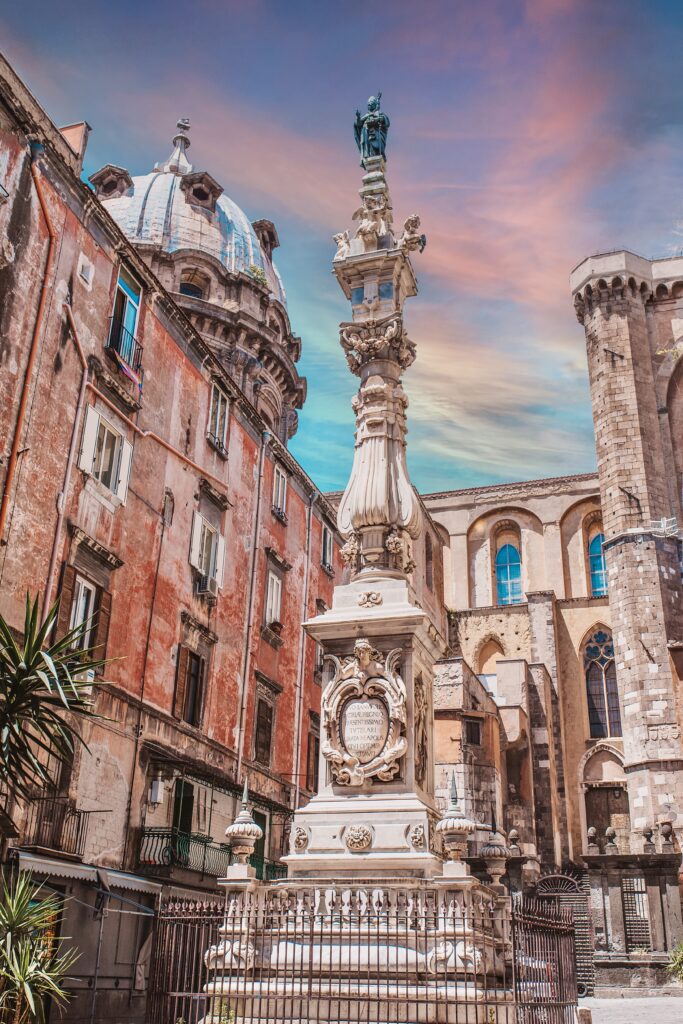
Who Was San Gennaro?
San Gennaro served as the Bishop of Benevento. He was tortured and beheaded in 305 during the Enmperor Diocletian’s persecution of Christians.
Following his martyrdom, in 472, he became the patron saint of Naples. The citizens invoked his protection after a volcanic eruption from Mount Vesuvius.
In the 9th century, San Gennaro’s tomb was moved from the Catacombs of San Gennaro to the Duomo. In 1497, other remains of San Gennaro, including his skull and blood, were gathered from various locations across Italy and brought together in Naples.
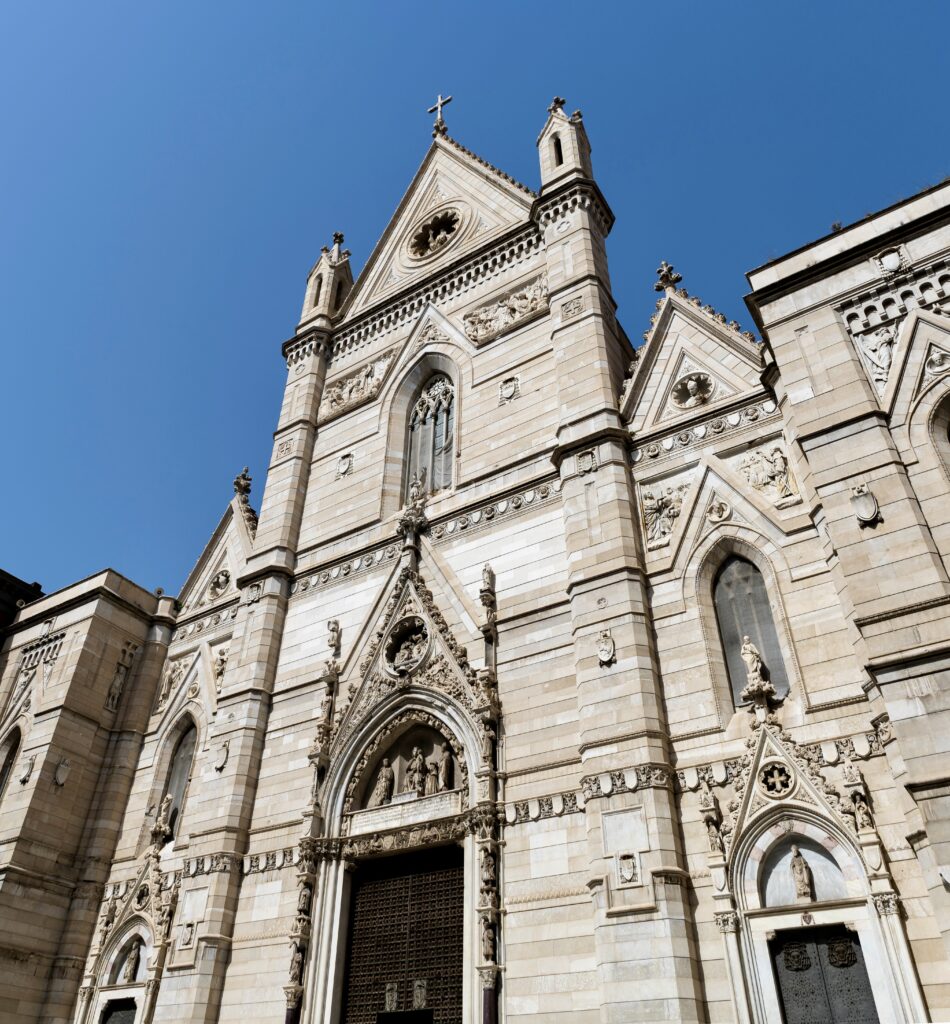
Guide To Naples Cathedral: What To See
Here are the things you can’t miss on a visit to the Duomo di Napoli.
1. Facade
Start with the impressive (though rather unweildy) facade. It’s quite austere and was only completed in 1905.
But it has a central portal and two side portals. Above them are triangular pediments with Gothic tracery and sculptures.
The central bronze door, the Porta Santa, dates from the 15th century. It’s guarded by two fierce looking lion sculptures.
The facade is illuminated at night, which makes it particularly attractive.
>>> Click here to book a walking tour of Naples
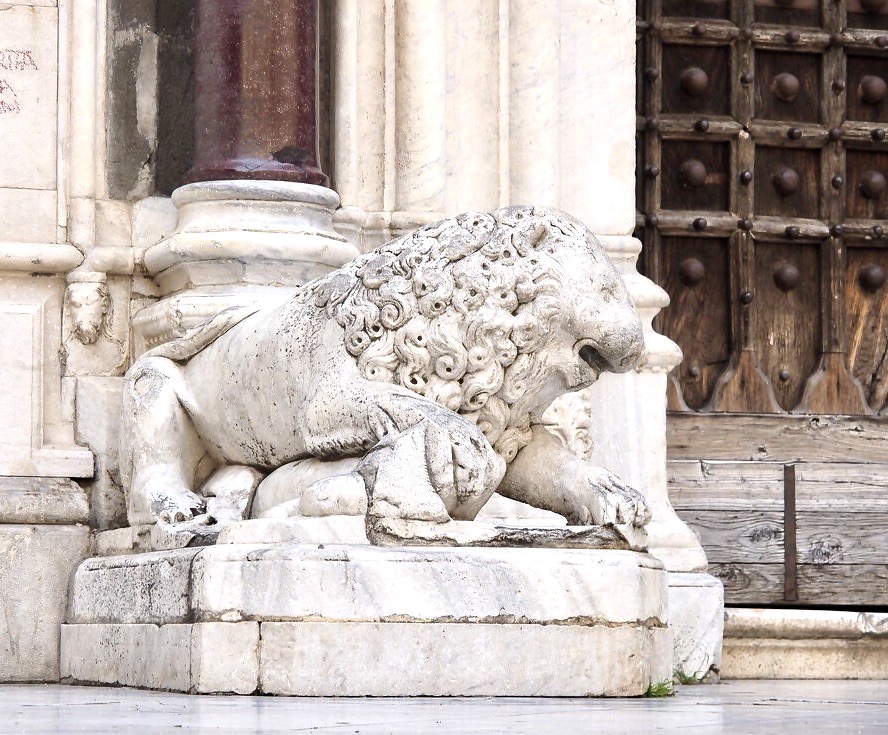
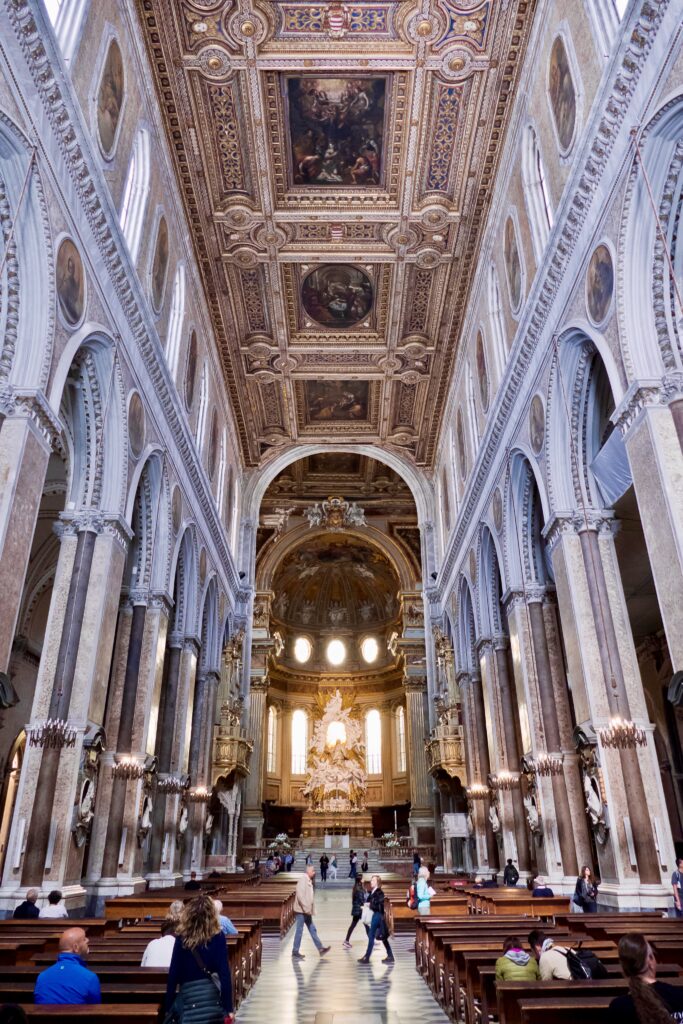
2. Nave
Next, head through the doors and wander through the cathedral’s mid-size nave. It features a Latin cross plan with a central nave and two side aisles.
The aisles run parallel to the nave and are separated by stout granite and marble columns. The columns are adorned with busts of various popes and bishops. The ceiling is gilded and frescoed.
There is a knock off of Bernini’s famous Chair of St. Peter in the apse at the front of the cathedral.
It’s a theatrical and gilded sculpture that glorifies the chair-throne as a symbol of the pope’s power and infallibility. It depicts Mary’s assumption into heaven.
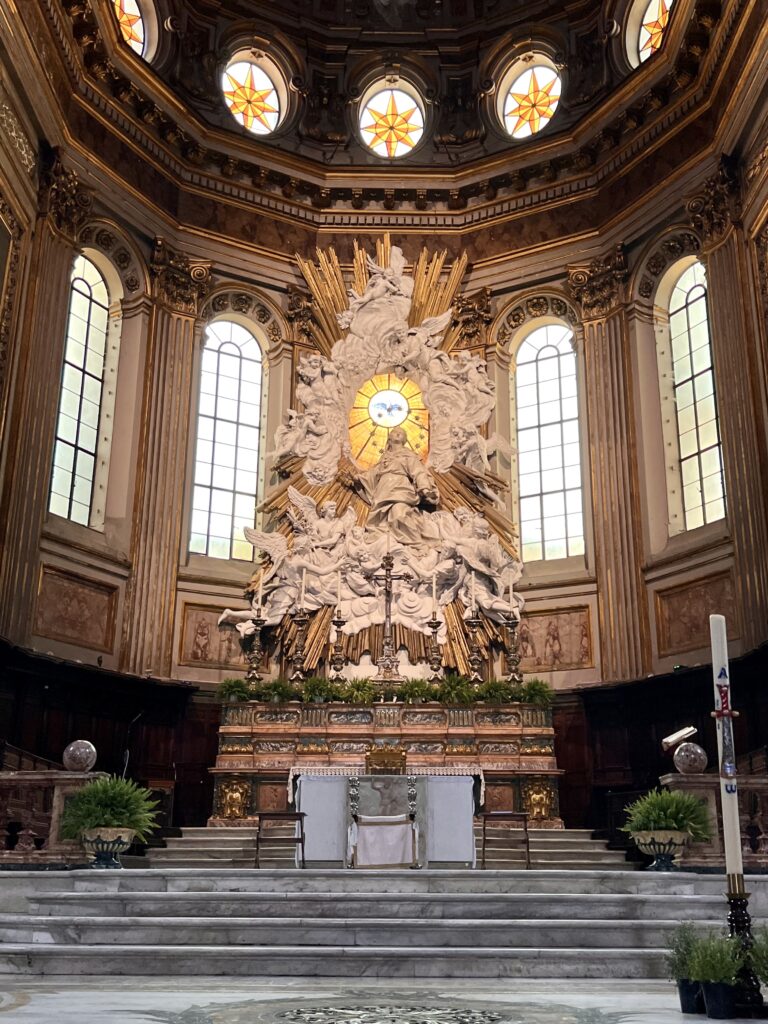
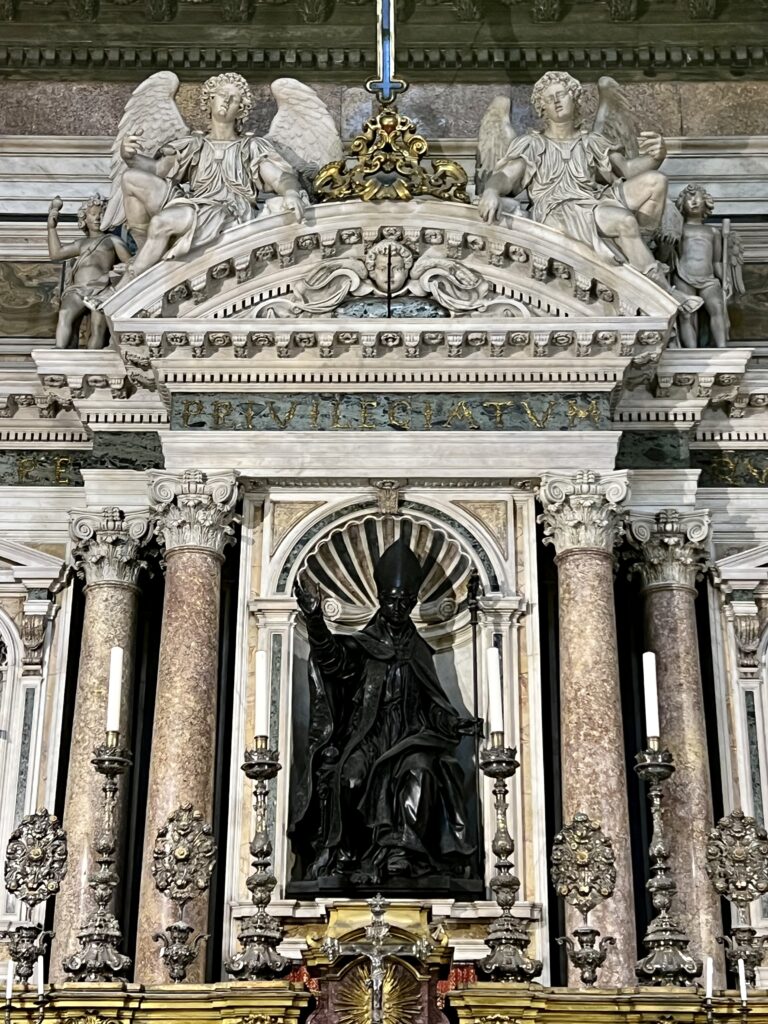
3. Chapel of San Genaro
The Chapel of the Treasure of San Gennaro is the cathedral’s absolute must see. It’s an over-the-top shrine with Naples most exuberant Baroque decorations.
You can’t walk into the chapel. It’s enclosed with a gilded bronze gate. But you can get close enough.
The chapel literally glitters with silver, gold, and red granite Corinthian columns. There’s an intricate silver altar and silver busts of saints.
The altar is adorned with decorative elements — marble, sculptures, or reliefs. Above it is a bronze statue of San Gennaro.
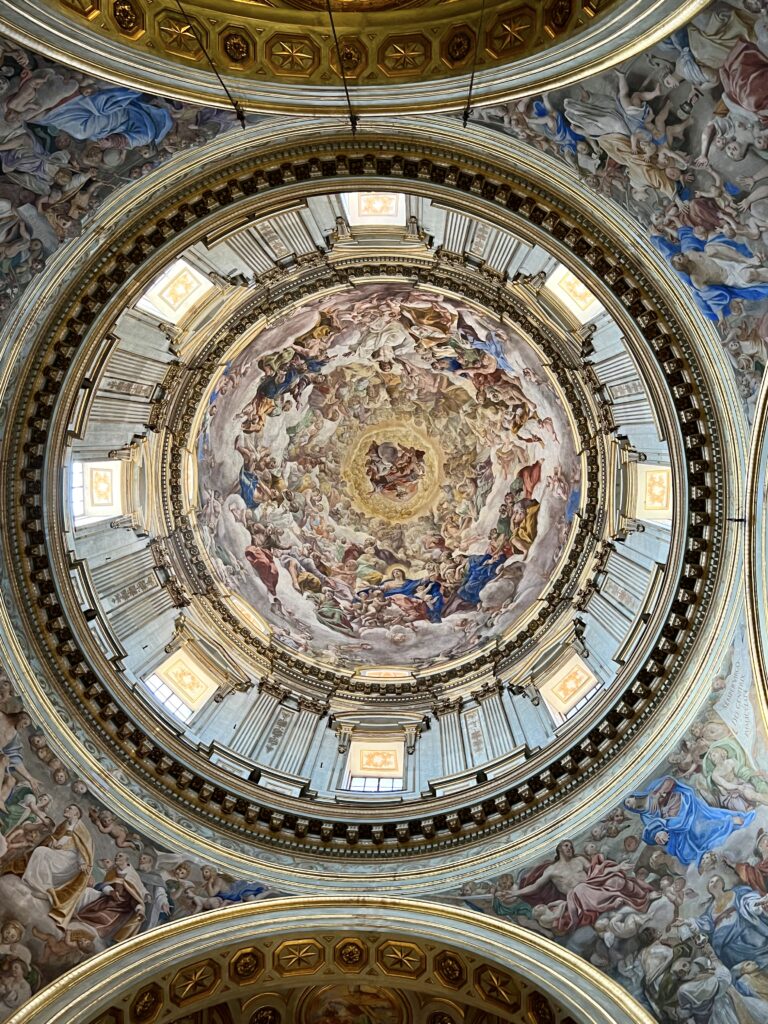
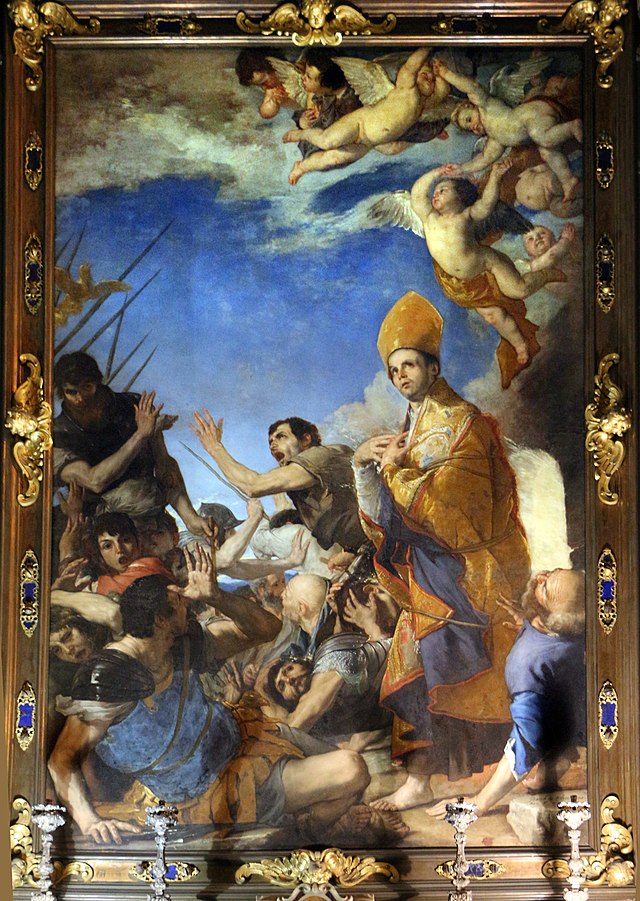
Completed in 1646, the chapel was designed by the Theatine priest and architect Francesco Grimaldi. The chapel attracted some of the most esteemed artists of the period, who contributed to its splendor and legacy.
Highlights include Jusepe de Ribera’s magnificent painting St. Gennaro Escaping the Furnace Unscathed and Giovanni Lanfranco’s breathtaking dome fresco on the dome.
The chapel famously houses two vials of San Gennaro’s congealed blood. They are stored in a silver bust and locked away in a strongbox.
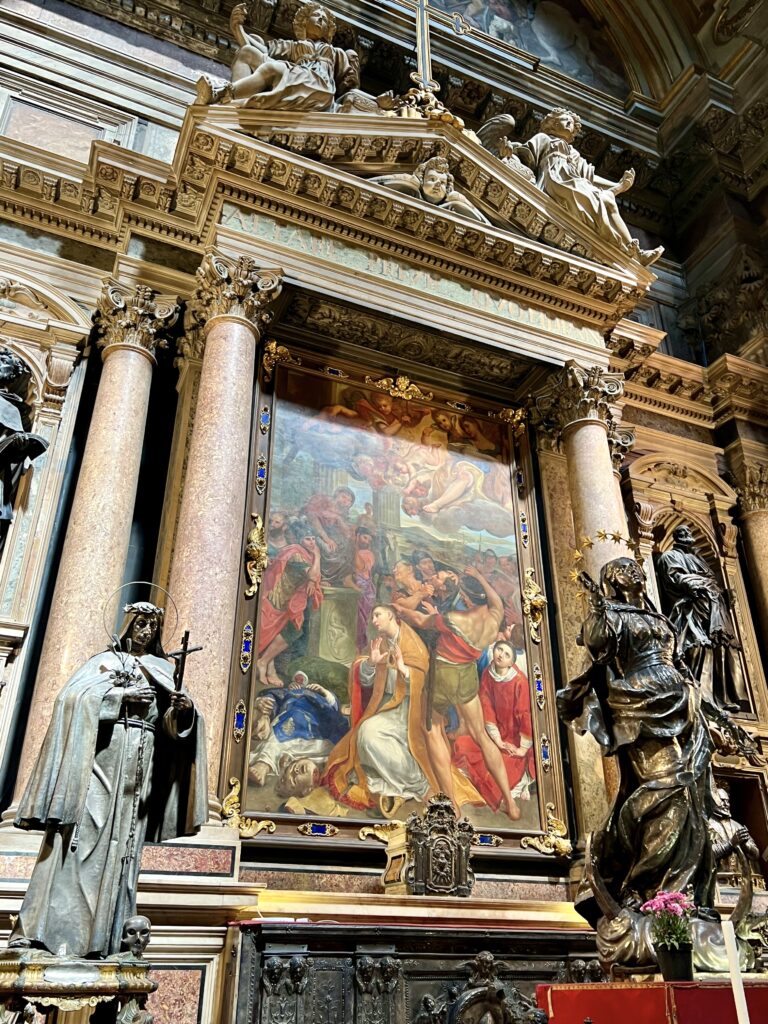
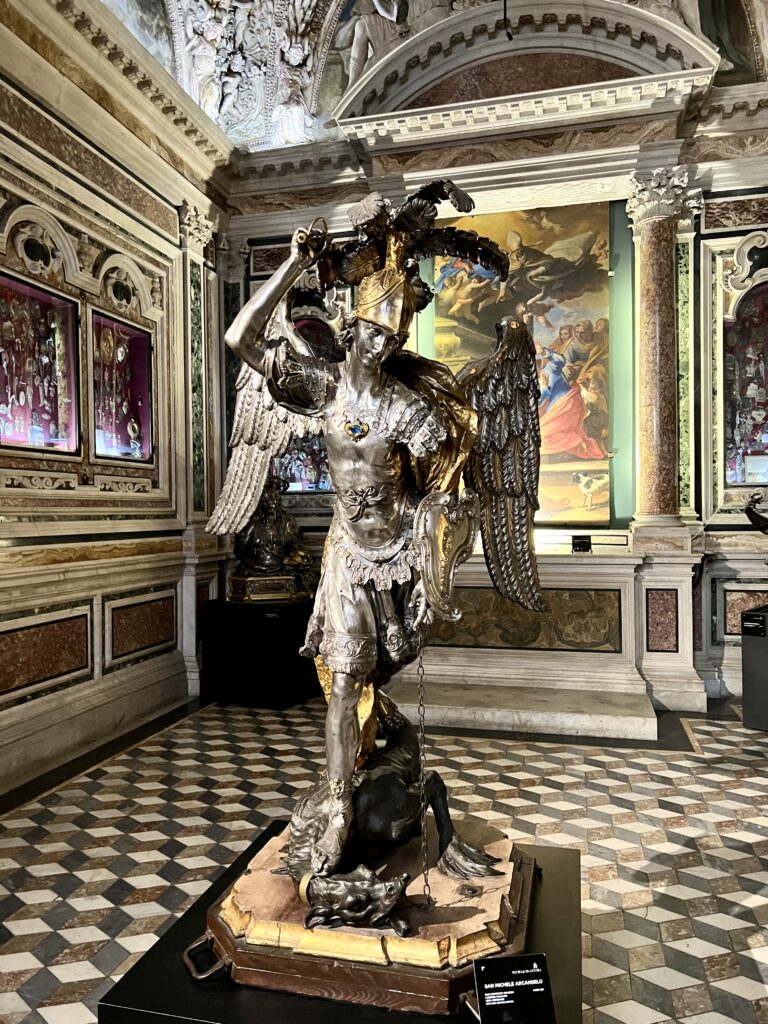
In one of Christendom’s greatest miracles, the blood is said to liquify in the presence of believers. The city’s fortunes are also said to rise and fall depending on how quickly this miracle occurs.
The vials are only taken out for the ceremony three times per year. So, unless you time your visit right, you won’t be able to see them.
Thousands of people and faithful pilgrims attend. The miracle is regularly televised in Italy.
Not to be cynical, but during the process, the vial is inverted. Scientists have found that shaking or moving congealed blood can make it liquify. The Vatican has never sanctioned the liquefaction as a miracle. But it supports its popular veneration.
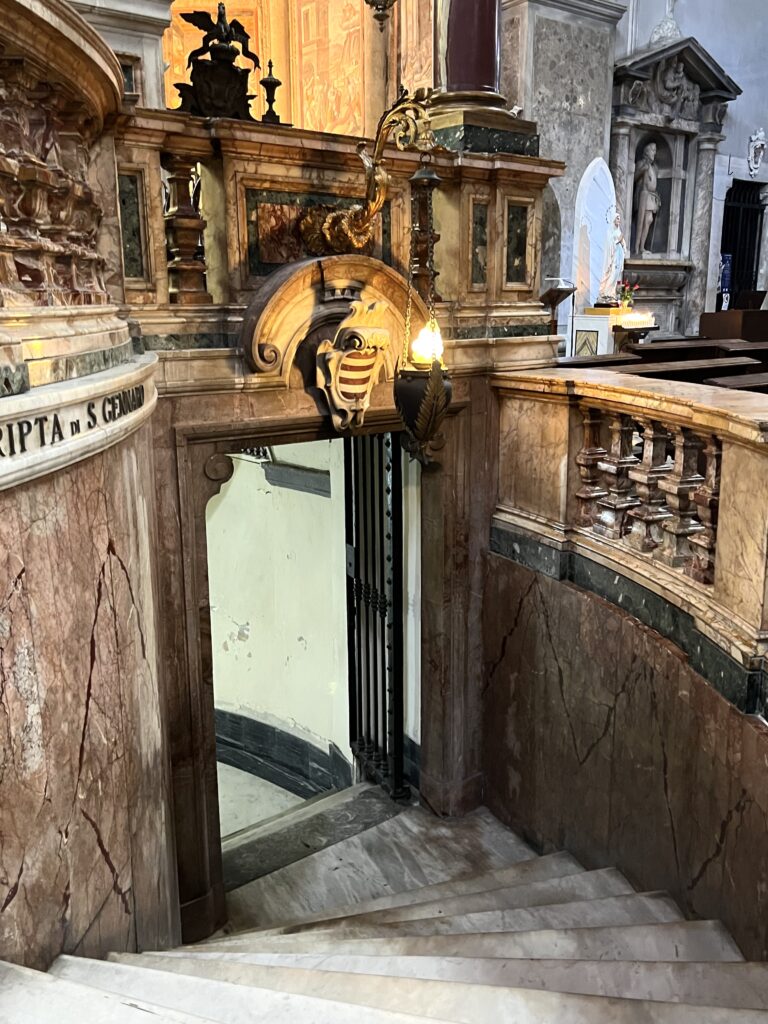
4. Crypt of San Gennaro
From the left aisle, you can descend into the crypt. This is where you’ll find the tomb of San Gennaro.
The crypt provides a sacred space for the veneration and devotion to the patron saint. It has an ornate stuccoed ceiling with bas reliefs of bishops and saints.
There’s a beautiful tiled floor and granite Corinthian columns. In one room is the simple tomb of San Gennaro. There is also a sculpture of him kneeling.
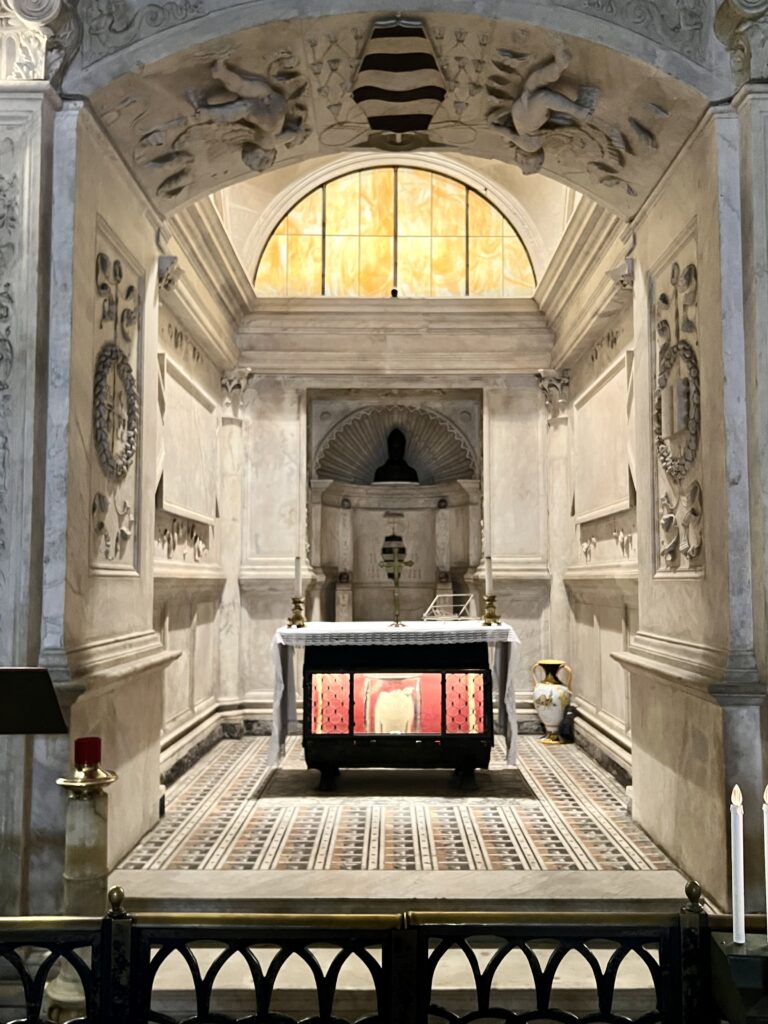
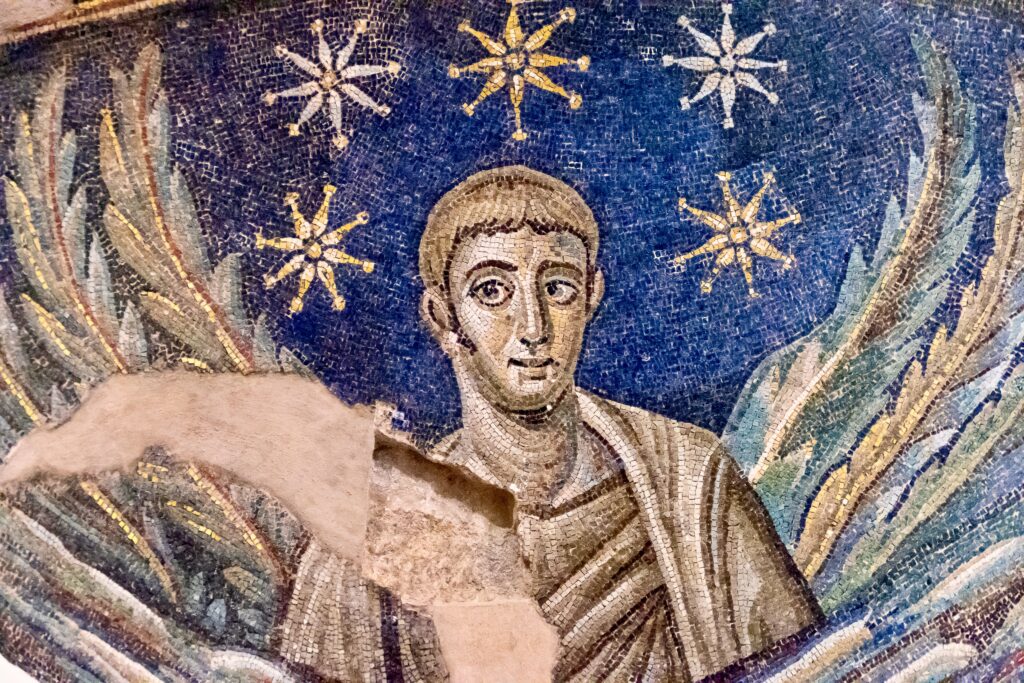
5. Baptistery
The Duomo’s Baptistery is one of the oldest baptisteries in Western Europe. It’s accessed from 4th century Basilica di Santa Restituta (a church within a church) in the left aisle. To the right is a doorway to the baptistery.
The octagonal-shaped baptistery is just two rooms separated by columns. But it’s rightly famous for its glittering ceiling mosaics. Historians estimate that they date to the 4th or 5th century.
In the center of the dome is the Chi Rho symbol and the Greek Alpha and Omega symbols. They refer to Christ as the beginning and the end.
In one scene, Christ stands on an orb next to St. Peter. In others, you see the miracle of Christ turning water into wine and Christ walking on water.
In lunettes in the four corners of the ceiling are portraits of the four evangelists.
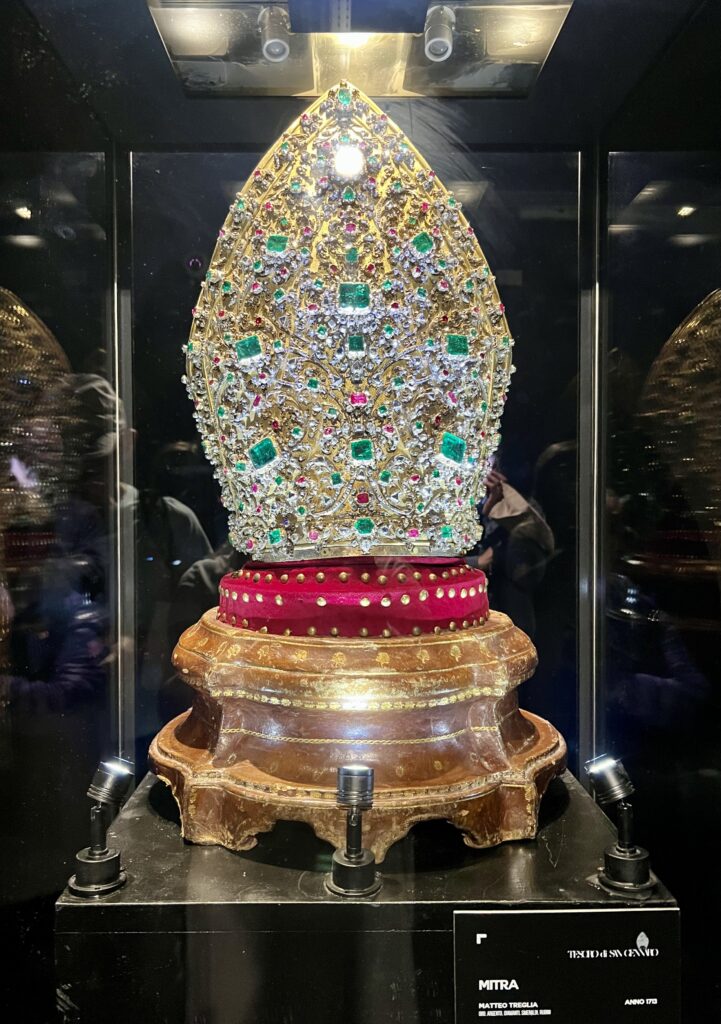
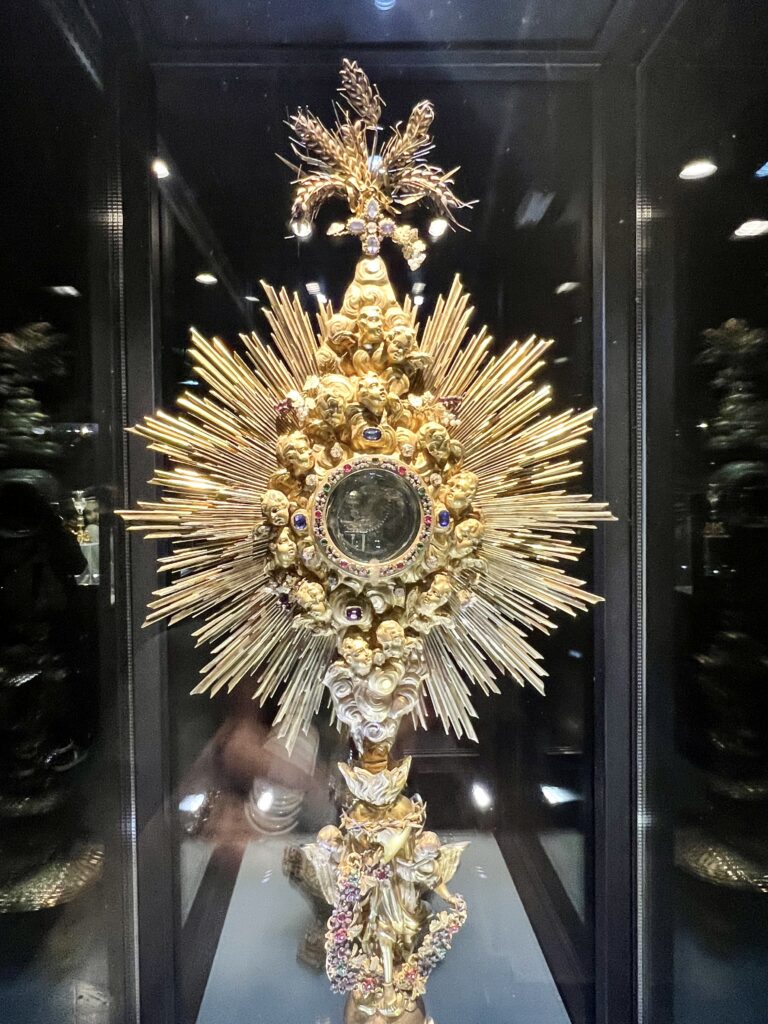
6. Museum of San Gennaro
The Treasury Museum is a small museum with a bit of a sticker shock price tag. It’s 12 euros per person. It’s housed in a building next to the cathedral.
Yet, holy bling, it’s chock full of precious bejeweled objects that rival the Crown Jewels in the Tower of London. And they are owned — not by the Vatican — but by the people of Naples.
The museum holds over 26,000 sacred artifacts, silver statuary, vestments, and religious artworks. The must sees are the Collar of San Gennaro, the bishop’s mitre, and the monstrance used to display the consecrated host.
If you are not particularly interested in reliquaries and jewels, it may not be worth the admission price to you.
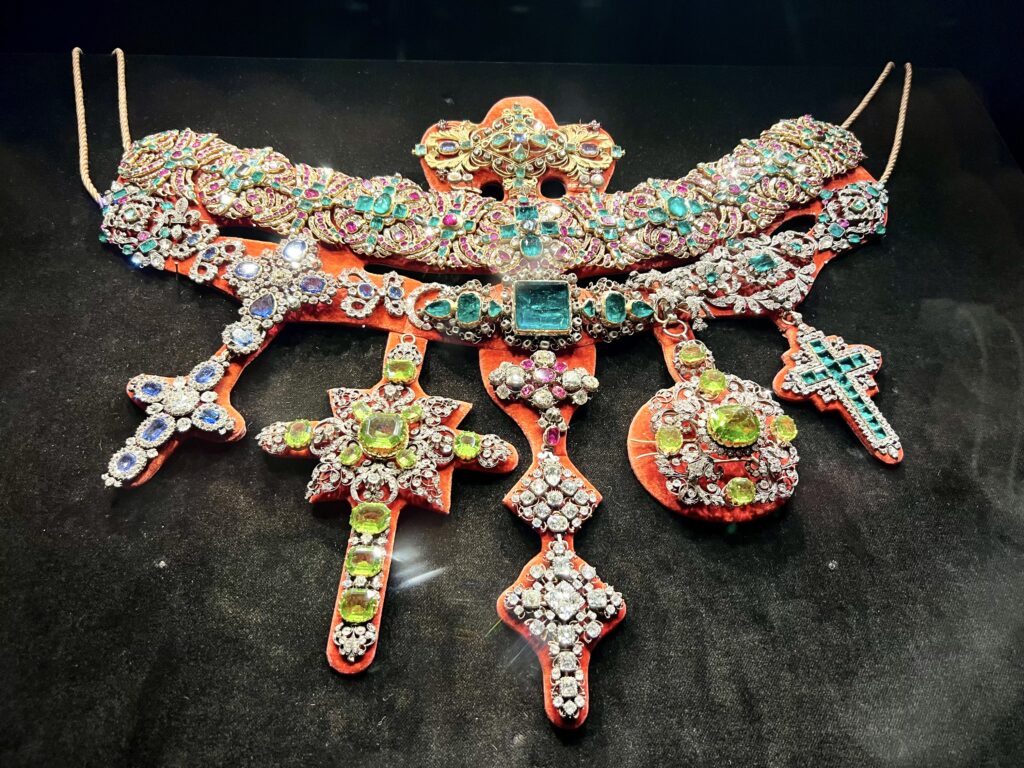
Practical Guide & Tips For The Duomo Di Napoli
Here are some must know tips for visiting Naples Cathedral.
Address: Via Duomo 147
If you want to use public transport, take metro Line 1 and get off at the Piazza Cavour station. Or metro line 2 to Museo.
Opening Hours: Open daily from 8:30 am to 1:30 pm & 2:30 pm to 7:30 pm.
Tickets:
The cathedral is free to visit. The audio guide for the Chapel of San Gennaro is 4 euros. Entry to the baptistery is 2 euros.
You’ll also need a ticket for the treasury museum. Click here to pre-book a ticket. You can also book a combination ticket for both the Treasury Museum and the Catacombs of San Gennaro.
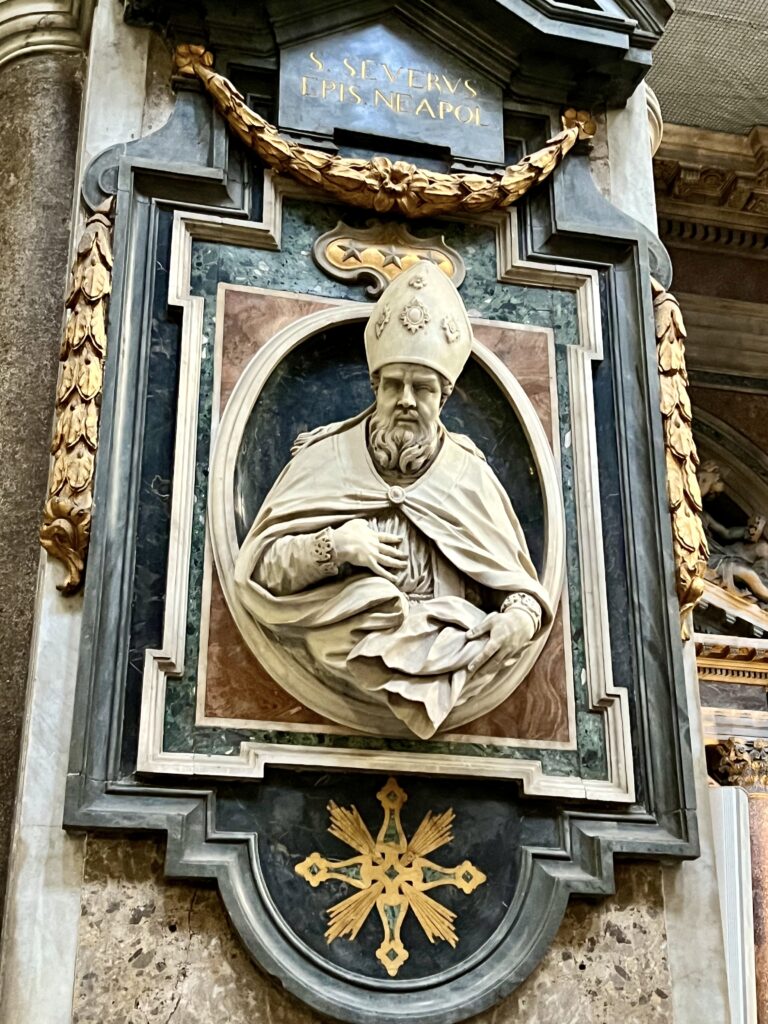
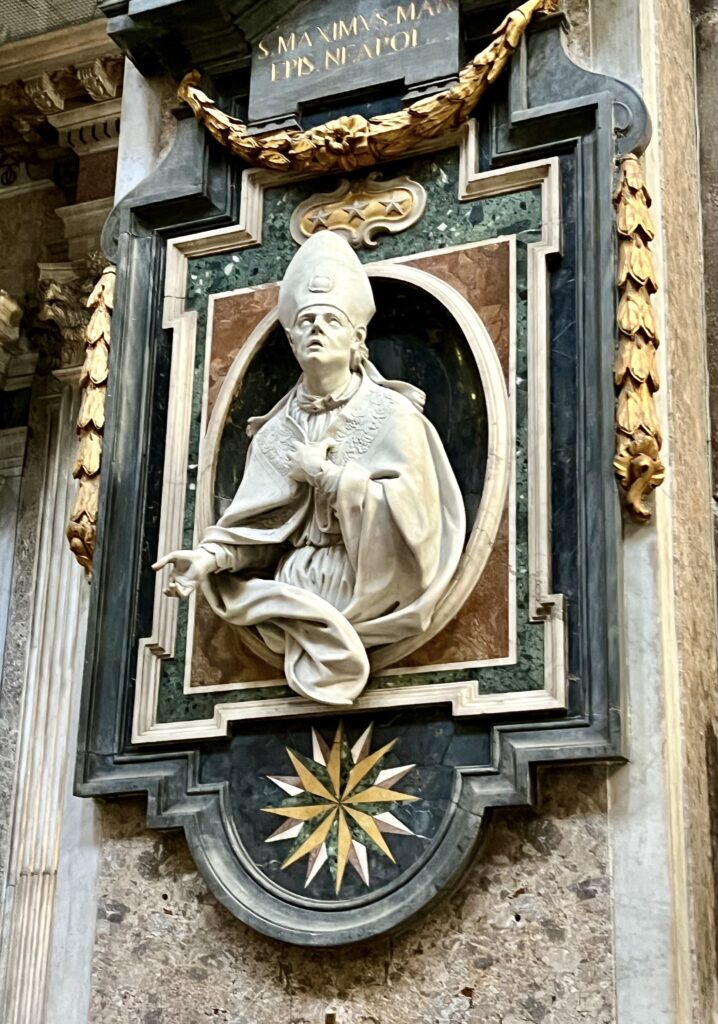
If you’re serious about religious history and architecture, it’s well worth booking a guided tour that covers both the Chapel of San Gennaro and the Treasury Museum. There is not much explanatory signage.
Is Naples Cathedral Worth Visiting?
I think the cathedral of any major city is almost always worth visiting, especially when admission is free. Though the Duomo di Napoli is smaller and more modest than other cathedrals, it’s rich in treasures.
Plus, it’s is an entire complex with a church, chapels, baptistery, crypt, and museum. So, there is plenty to see. The baptistery and its mosaics are especially lovely.
Naples Cathedral will especially appeal to Baroque enthusiasts or to historians and pilgrims who want to know about San Gennaro. I would say, though, that I preferred the Baroque stylings at Gesu Nuovo over the Duomo.
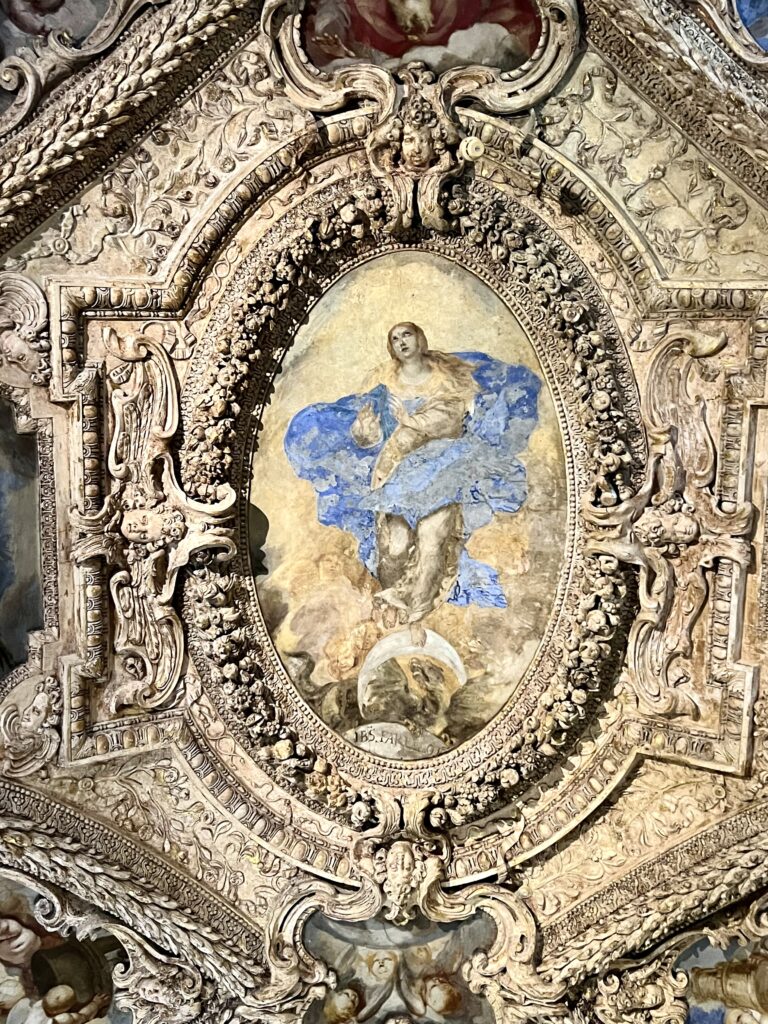
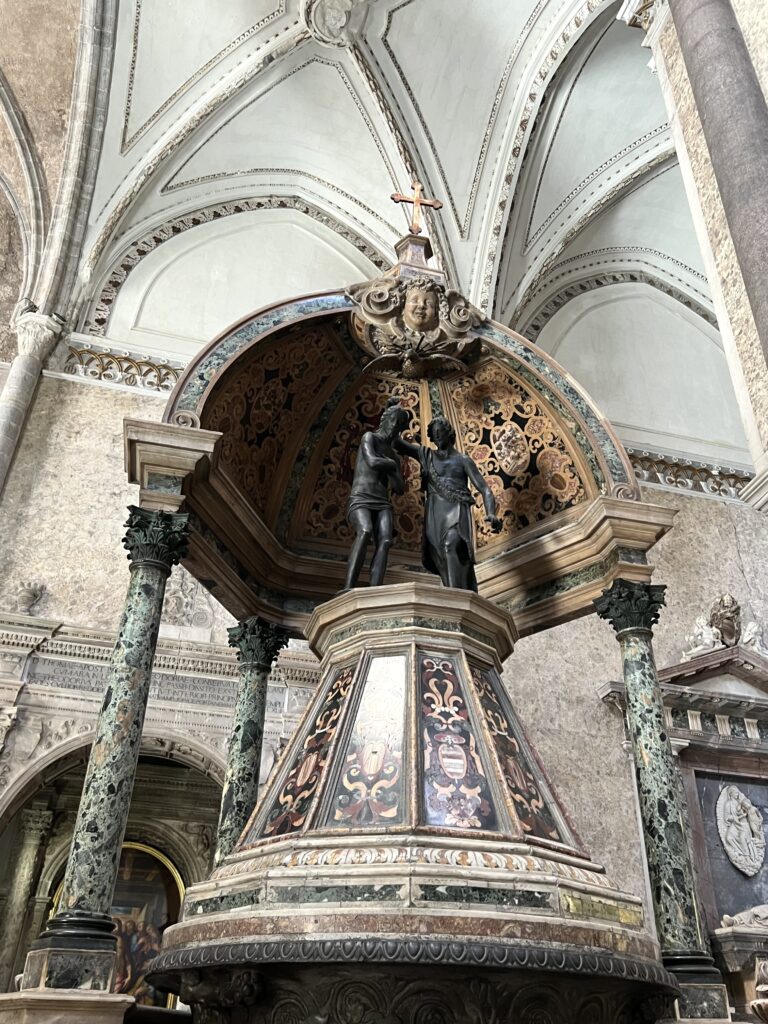
What To See Near Naples Cathedral
Naples Cathedral is at the eastern end of the centro storico. So, you can easily reach other attractions from it.
Right next door is the Pio Monte dell Misericordia. It’s a small church and picture gallery. It’s famous for housing Caravaggio’s painting Seven Acts of Mercy, which is definitely worth seeing.
San Lorenzo Maggiore is also very close. It’s an interesting Gothic church that houses ancient Roman ruins, including the remains of a marketplace from the 1st century A.D.
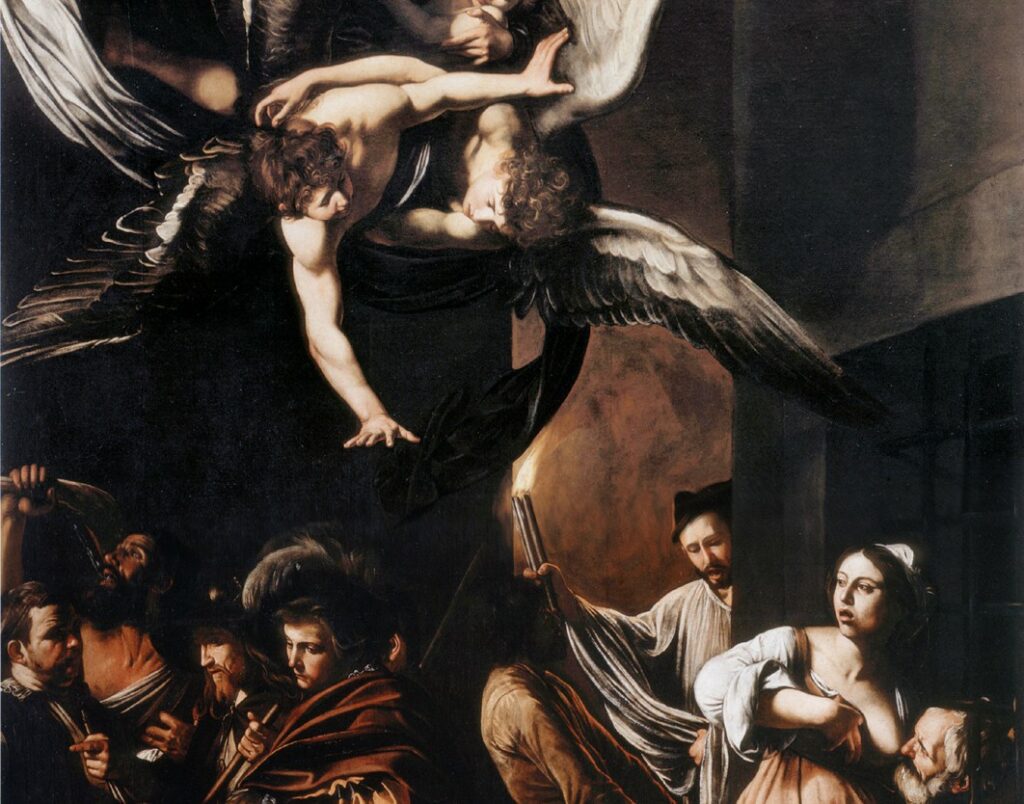
You can also just head down Spaccanapoli, the main drag of the centro storico, and see a whole host of churches and palazzos.
I hope you’ve enjoyed my guide to the Duomo di Napoli. You may enjoy these other Italy travel guides and resources:
- 3 day itinerary for Rome
- 5 day itinerary for Rome
- 1 day itinerary for Vatican City
- 3 day itinerary for Florence
- 2 day itinerary for Venice
- 1 day itinerary for Milan
- 1 day itinerary for Siena
- One week in Umbria
- 10 days in Italy itinerary
- 10 day itinerary for Tuscany
- 12 ways to spend 1 week in Italy
- 2 weeks in Sicily itinerary
If you need a guide to Naples Cathedral, pin it for later.

